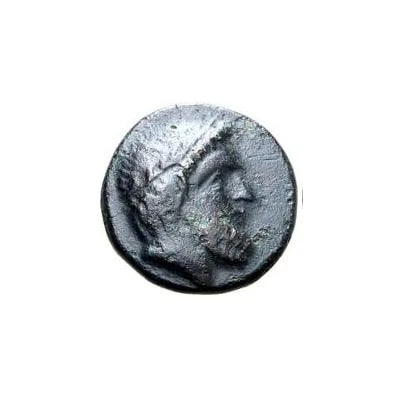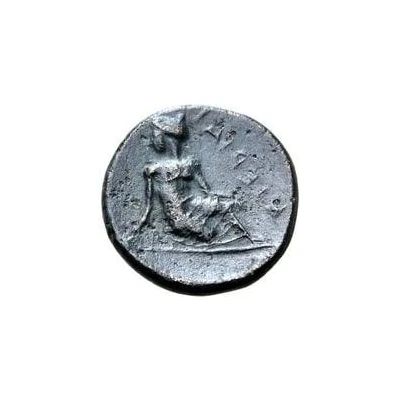


© Roma Numismatics Limited
Chalkon 400 BC - 300 BC
| Bronze | 2.22 g | 14 mm |
| Issuer | Kierion (Thessaly) |
|---|---|
| Type | Standard circulation coin |
| Years | 400 BC - 300 BC |
| Value | Chalkon (1⁄48) |
| Currency | Drachm |
| Composition | Bronze |
| Weight | 2.22 g |
| Diameter | 14 mm |
| Shape | Round (irregular) |
| Technique | Hammered |
| Orientation | Variable alignment ↺ |
| Demonetized | Yes |
| Updated | 2024-10-10 |
| Numista | N#369768 |
|---|---|
| Rarity index | 97% |
Reverse
Arne, half-kneeling to right, head reverted, playing with astragaloi.
Script: Greek
Lettering: KIEPIAI[ON]
Translation: Kierion
Interesting fact
The Chalkon coin was used in ancient Greece during the 4th century BC and was known for its unique design. One side of the coin features a horseman, while the other side features a shield and a spear. This design was meant to symbolize the military strength and power of the city-state of Kierion, where the coin was minted. The use of bronze in the coin's construction was also significant, as it was a durable and widely available material that was well-suited for currency at the time. Overall, the Chalkon coin is a fascinating piece of history that provides insight into the economic and cultural practices of ancient Greece.